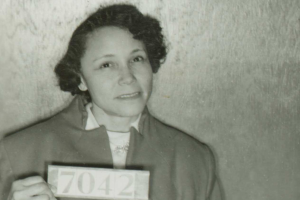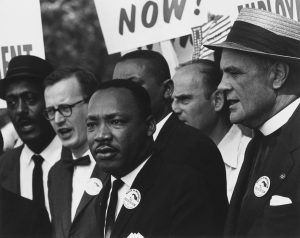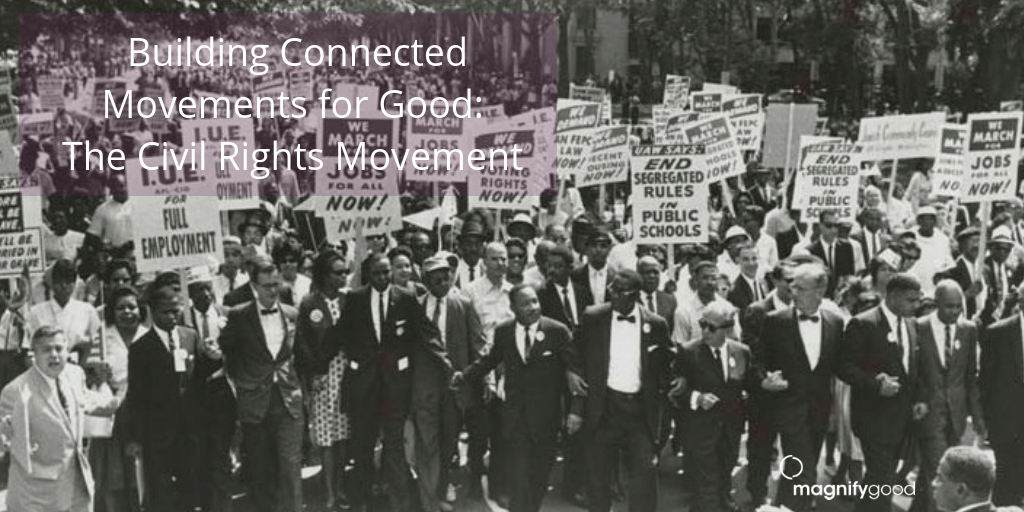“Men and women search for meaning, hope for fulfillment, yearn for faith in something beyond themselves, and cry desperately for love and community to support them.” – Dr. Martin Luther King, Jr.
We all hold a core truth — a passion that inspires us to take meaningful action, and a dedication to achieving the greater good. As humans, we have an instinctual need to create community by connecting with others who share these passions.
During the 1950s and 1960s, African American leaders emerged to dispute the injustices of segregation laws in the south. What started as a call-to-action for black Americans to participate in the fight to end segregation later became known as the Civil Rights Movement — one of the most groundbreaking and notable movements in history. It took these leaders standing up to rally a nation of people to work together to create change.
Movements are the true heart of change. Throughout history, we’ve seen progress advanced across the world as a result of people-powered movements.
Today, movements are often digitally formed. The structural power of the Internet and social media has given us the space and tools to build online communities. It has allowed us to reach beyond barriers that once limited us and make connections with individuals across the world who share our passions.
While these digital movements fuel dialogue and saturate headlines, they often lack the ability to result in true impact for the cause. Because beyond a shared hashtag, digital movements oftentimes lack connection and definitive leadership.
Connecting is bigger than messages. It’s about understanding the point of view, emotions and dreams of people — then connecting those people to each other and to a leader. Through connections, movement leaders can craft messages and calls-to-action that make others a part of our mission — as well as the solution — and create experiences that connect them to one another.
The greatest movements begin with a leader — someone who is willing to nurture a connected community and inspire others to get involved with a cause. The Civil Rights Movement presented a perfect framework for movements because of the connections its leaders had to their audience.
Connecting Others
Creating connections requires engaging your audience through shared experiences related to their passions and interests. Everyone has their own experience, but connecting others through these shared experiences is key to driving action and support for your cause.
After being verbally attacked for sitting in the “whites only” section of the bus — an experience many African Americans were familiar with in the south, Jo Ann Robinson made it her mission to desegregate the city’s buses. On Dec. 1, 1955, Rosa Parks was arrested for refusing to give up her seat on one of the city’s buses. 
The next day, Robinson gave the community a clear call-to-action: Don’t ride the bus.
African Americans in Montgomery accounted for the majority of the city’s bus riders, strengthening their impact and inspiring movement leaders to continue the boycott. To ensure the boycott could sustain until demands were met, the community set up car-pools, and African American taxi drivers offered rides for the same price as bus fare.
Together, they were able to end bus segregation in Montgomery, exhibiting the power of a connected community.
Connecting Them to A Leader
During the Civil Rights Movement, passionate individuals like Jo Ann Robinson, Rosa Parks and Martin Luther King Jr. emerged as leaders — mobilizing their community through connections and shared experiences. These leaders focused on connecting person-to-person — rather than taking a top-down approach, sparking engagement among their communities and igniting a movement.
The Montgomery Bus Boycott set the stage for the emerging Civil Rights Movement — and it was the first time the community encountered Martin Luther King’s leadership in action. This experience propelled King to the forefront, positioning him to be the most widely celebrated leader of the movement.
The most effective leaders know how to communicate with their audience — one of King’s most prominent strengths. 
When King spoke, he had the ability to connect authentically with his audience on an emotional level, choosing words and phrases that richly illustrated the truths he wished to convey. Telling stories using visual language paints an image for the audience and creates space for them to insert themselves into the experience.
His most notable speech, given at the March on Washington for Jobs and Freedom, is undoubtedly one of the most effective uses of visual language. In his “I Have A Dream” speech, King used metaphors to express the urgency of freedom in the south.
Using words and phrases like “sweltering” and “heat of oppression” provided an immersive storytelling experience for those who watched King give his speech — and created room for those who did not understand the abstract ideas of injustice and oppression.
Through his skillful communications and emphasis on fighting injustice through nonviolence, King helped sustain and strengthen the Civil Rights Movement.
Not only did King solidify his role as the leader of the Civil Rights Movement, he is one of the most notable leaders in our world’s history.
Modern Movements in the Digital Age
We’ve seen tremendous change made across our world as a result of people coming together for good. History has continuously shown us that creating change stems from organized, mobilized and connected communities.
The rise of the digital age has given us the space and tools to collaborate ideas and spread messages at warp speed. But to truly generate change, these digital movements need guidance and leadership. This presents a significant opportunity for the social sector, which is uniquely positioned to lead these social movements — connecting passionate individuals and communicating their passions.
Communicating for change is bigger than messages. It’s about connecting others and nurturing a community of passionate people who want to change the world for good. As professionals in nonprofit communications and the social sector, our mission is to change the world for good. We have the opportunity and the responsibility to lead these movements and catalyze our impact, as well as the impact of others.
As a social sector communications agency, MagnifyGood specializes in elevating the marketing, PR, branding, advertising, and social media of nonprofits, foundations, and other mission-driven organizations. Looking to enhance your donor engagement, create compelling impact stories, establish a brand that aligns with your mission, or explore innovative strategies to connect with your community? Contact us here. Let’s magnify good together.



